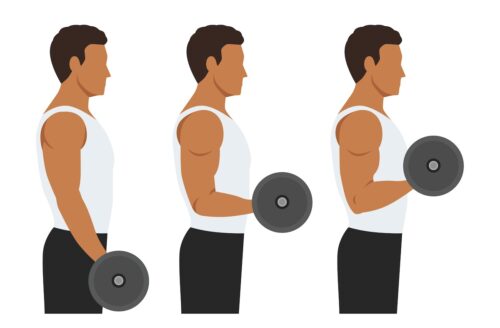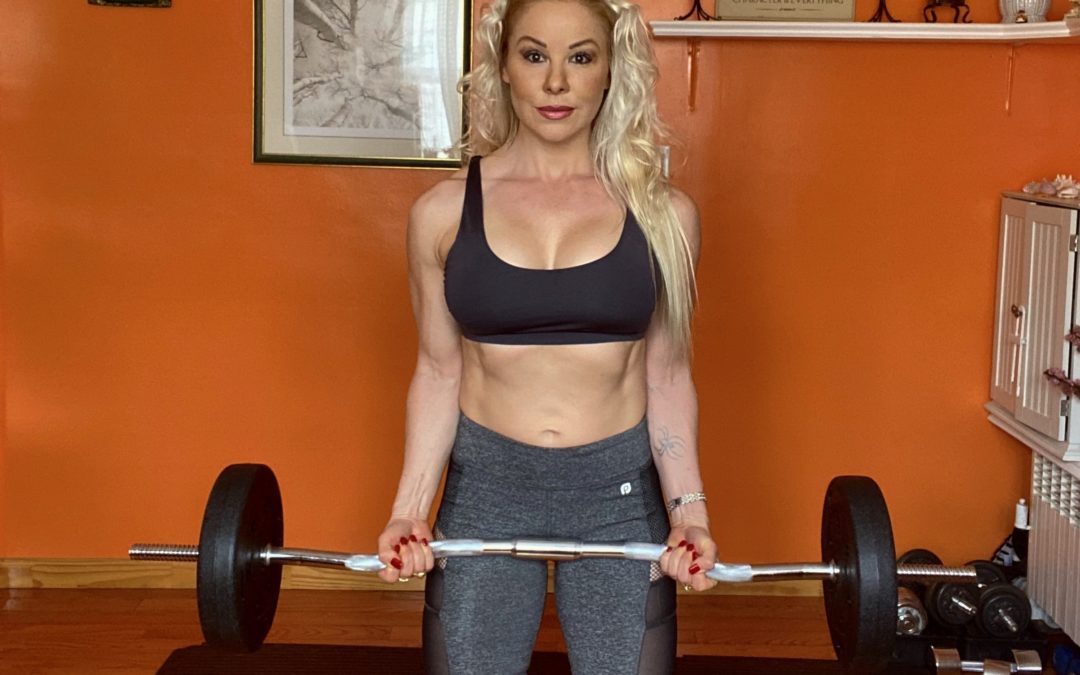A key aspect of fitness training is adaptation, which is why diversity is so important. Making changes to your routine positively affects your body and physiology, as well as your mental state. When aiming to shape nice-looking arms, it is essential to perform different bicep and tricep exercises. An awesome arm exercise is the barbell drag curl.
Below we’ll look deeper into barbell drag curl and we’ll cover the following:
- Muscles involved in the barbell drag curl
- Benefits associated with barbell drag curls
- How to properly do barbell drag curls
- Common mistakes when performing barbell drag curls
- Video on how to do a barbell drag curl
- Bicep exercises to complete your arm workout
Barbell drag curls are not performed much but they are highly effective. Instead of a regular curl, this exercise involves a dragging-like motion – therefore its name.
What Muscles Do Barbell Drag Curls Work?
Primary muscles involved in barbell drag curls:
- Biceps: The biceps brachii is the large muscle that lies on the anterior part of the upper arm between the shoulder and the elbow. It arises on the scapula and runs towards the upper forearm. The biceps muscle has two heads (the short head and the long head) – therefore its name. The biceps’ main function is to flex and supinates the elbow -allowing it to rotate so the palm faces up or forward. When the biceps contract, they pull up the forearm is pulled up.
Secondary muscles engaged:
- Brachialis: The brachialis muscle sits under the biceps brachii. This long muscle flexes your elbow. It connects your upper arm bone (humerus) to the long forearm bone (ulna).
- Brachioradialis: This muscle also sits in the anterior compartment of the upper arm. The brachioradialis muscle assists the brachialis with elbow flexion and connects your humerus bone to the short lower arm bone known as the radius.
- Wrist Extensors: These muscles are located along the forearm. They connect the upper arm bone (humerus) to your hand via your wrist and are involved in extending the wrists and fingers. Some of the wrist extensor muscles are the capri ulnaris, the digiti minimi, the digitorum, the indices, the pollicis brevis, and the retinaculum of the hand.
- Wrist Flexors: These muscles are also located along the forearm and connect your elbow to your hand. The wrist flexor muscles serve to flex the wrists and fingers. Your carpi radialis and carpi ulnaris flex your wrist up towards your forearm while you digitorum profundus and superficialis flexor muscles connect your forearm bone to the bones in your fingers, allowing them to curl.
- Deltoids: These muscles make up your shoulders. The wide part of the muscles attaches to your shoulder blade (scapula) and your collarbone (clavicle) before stretching down to your humerus bone. The anterior deltoid flexes and medially rotates the arm, the lateral deltoid abducts the arm, and the posterior deltoid extends and laterally rotates the arms.
Barbell Drag Curls Benefits
After learning what muscles are involved in barbell drag curls, let’s see what benefits are associated with performing this exercise:
- Hypertrophy: Since your elbows are behind your body at peak contraction, the contraction is pretty hard with drag curls. This makes it a pretty effective exercise to add bicep size.
- Bicep Concentration: Keeping your elbows back and at your sides, allows your biceps to do all the work and not engage the shoulders. Great for isolation.
- Arm Strength: Drag curls strengthen your wrists and forearms besides your biceps. This can boost athletic performance and facilitate daily activities. Strong biceps come in handy when you are picking up objects, carrying things around, or moving heavier loads when doing other exercises, such as rows and lat pulldowns.
- Upper Body Health: Biceps collaborate in forearm supination, elbow flexion, and shoulder stabilization. So stronger biceps help you to maintain a healthy upper body.
- Aesthetics: Barbell drag curls help develop beautiful arms, which can translate into a great upper body.
- Simple: The Drag Curl is a straightforward and simple movement. You just need a barbell.
How to Do Barbell Drag Curls

- Stand with your feet shoulder-width apart with your knees slightly bent.
- Grab a barbell with a regular grip and let it hang by your upper tights.
- Keep your shoulders, hips, and knees aligned, your core tight, and your back straight.
- As you exhale, slowly curl the bar up to the lower chest level, bringing your elbows back slightly.
- Keep your upper arms steady, your elbows close to your body, and the bar in close contact with your body at all times, in a dragging-like motion.
- Pause for a second at the top.
- As you inhale, lower the bar slowly, keeping it in close contact with the body.
- Repeat the movement for 8 to 12 repetitions and for 3 sets.
Drag Curls Mistakes
Now that we know how to perform barbell drag curls, let’s see what the most common mistakes associated with this exercise are:
- Having your elbows forward: Be sure not to move your elbows forward like in a regular curl. You must keep them back throughout the movement.
- Recklessness: Barbell drag curls use a short range of motion so you really need to concentrate and squeeze when contracting.
- Dragging the bar up to the shoulders: The bar should come only as high as your lower chest in order to keep the elbows behind. Otherwise, you are doing the exercise incorrectly.
- Moving the arms back and forth: Do not move your elbows and upper arms throughout the movement. Aim to maintain the arms steady.
- Rounding your back: Keep your back straight and engage your core. A straight back helps you maintain proper alignment and perform the exercise properly.
- Moving the weights fast: Don’t perform the movement fast to avoid momentum. Slow down the repetition timing and squeeze every rep to isolate your biceps.
- Using very heavy weights: Do not use very heavy weights in order to avoid that other muscles, such as the core and back, help carry the load instead of the biceps. This exercise is hard – you don’t need a very heavy barbell. Lighter loads allow you to perform controlled reps with good form.
Barbell Drag Curls Video Tutorial
Bicep Workout
You can complete your bicep workout by performing the following exercises:
As you can see the barbell drag curl is a wonderful bicep exercise. It offers tremendous benefits associated with hypertrophy, strength, endurance, and aesthetics. Now that you know how to properly perform barbell drag curls, you can avoid the most common mistakes and enjoy their benefits. Remember, whether you want to lose weight, tone your body, or gain strength or size, all muscles must be trained.
Lift, Burn more Fat, Get Stronger, and Live Healthier!
To a Fitter Healthier You,
The Fitness Wellness Mentor



